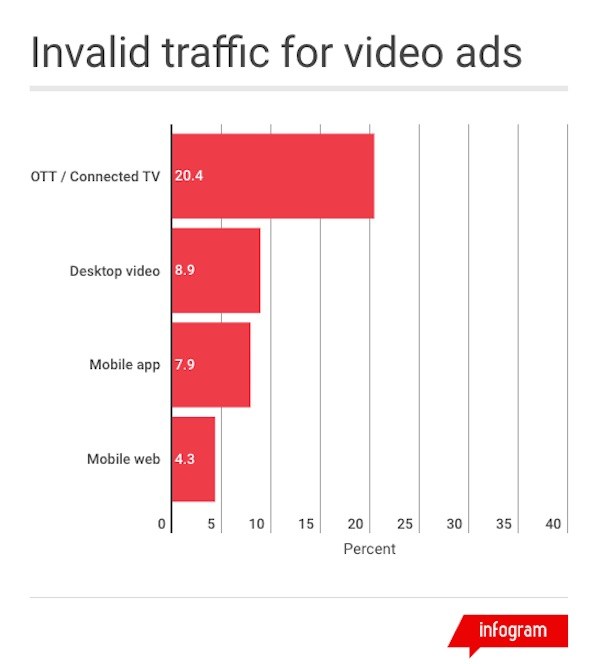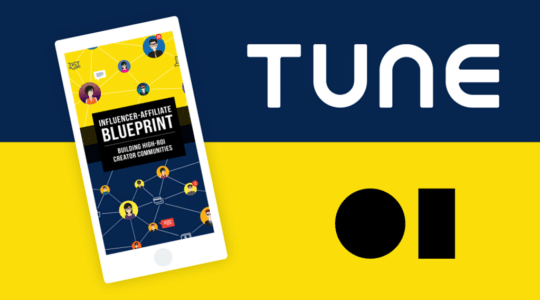
Photo by Kaur Kristjan on Unsplash
How much have you spent on fraudulent ads today? How much have your fellow advertisers?
Try $51 million.
Research estimates that digital advertisers will waste $51 million on ad fraud every single day in 2018. That’s a massive $19 billion over the year. And while the industry has made strides to combat ad fraud, it still remains a colossal and costly issue.
Digital advertising fraud is one of the many topics we’re tackling at Postback 2018. Held over July 19-20 in Seattle, Postback brings together the best minds in the marketing industry to network, share ideas, and foster relationships. See the rest of the agenda and our current speaker list here.
In this post, we’ll take a look at the state of ad fraud in 2018, the role technology and partnerships can play to mitigate risk, and the steps that brands, ad networks, and agencies can take to protect their investments.
Biggest Fraud Targets for 2018
$51 million a day is no small number. How are bad actors making those big bucks? By focusing on a few key areas, including:
- Video: It’s where the money is, so it’s the most attractive area for fraudsters.
- OTT: It’s where video advertising spend is set to increase the most, so it’s one of the areas most likely to be hit by fraud. In fact, more than 20% of programmatically sold connected TV or OTT video ads were determined to be fraudulent in October 2017.
- Mobile app and mobile web: Though less at risk than OTT and desktop video, mobile app and web are still formats to watch. Nearly 8% of mobile app ads and 4% of mobile web ads appear to be completely fraudulent.

Source: Digiday (https://digiday.com/media/fight-ad-fraud-4-charts/)
How Tech and Ad Partners Can Help
Who is ultimately responsible for ad fraud is up for debate. In the meantime, brands, partnerships, and strategists are stepping up to combat it from all angles.
Google, for example, has introduced new technology including page-level enforcements, and recently added 48 advertiser and publisher policies to their Adwords and Adsense platforms. The company has thousands of people working to remove bad ads, blocking 3.2 billion of them in 2017 (up from 700 million in 2015). In June 2018, Google also plans to ban advertising related to cryptocurrency.
Research shows that 85% of brands want trade organizations to help combat ad fraud. One step in that direction came from the Interactive Advertising Bureau (IAB), which developed an industry-wide defense against spoofing called ads.txt. Ads.txt allows publishes to attach an ads.text file containing a list of trustworthy SSPs to their site; this reassures media buyers that they’re buying inventory from someone qualified to sell on a given domain. (Google is already already filtering for ads.txt.)
In January 2018, partnerships went international: the U.K. and Ireland’s Joint Industry Committee for Web Standards, along with the U.S. body of the Trustworthy Accountability Group (TAG), announced that they will be working together to clean up digital advertising.
Steps to Protect Against Fraud
Even with these larger forces in motion, brands, ad networks, and agencies should still take precautions to prevent ad fraud. These include:
- Pre-qualifying publishers
According to AdWeek, 52% of marketers estimate that 10-50% of their marketing spend is lost to fraud. Yet only 14% of marketers whitelist sites. In order to ensure you’re working with reputable publishers, you can use third-party services like WhiteOps or Moat, which specialize in determining if ad pages are safe. - Considering private marketplaces
Invite-only marketplaces feature high-quality publishers who offer inventory to select advertisers. These marketplaces give advertisers more transparency into what they’re buying, and from whom. At TUNE, we offer a Certified Partner Program where marketers can choose from advertising partners of the highest integrity and quality. - Watching campaigns for suspicious traffic
Make sure you keep an eye on traffic volume to determine if there’s traffic that’s suspect. Bot traffic tends to be erratic, whereas human traffic is steadier. If you see a high bounce rate and new session rate with low page per session or site duration rates, it’s likely bots are to blame. - Working together for a more united industry
TUNE has a unique position in the industry because we work with both marketers and ad partners, enabling both to protect themselves as they work better together. TUNE’s transparent fraud insights provide ad partners with marketer traffic quality, marketer fraud rules and conditions, and reason codes for rejected installs to help partners take action. We believe that the more transparency everyone has, the more everyone wins.
Planning Ahead
Fraud isn’t going anywhere soon. To limit your vulnerability to fraudulent traffic and the massive monetary risks associated with it, work with advertising partners you can trust. Be more hands-on in which publishers you choose, and what your traffic looks like. Ultimately, it’s going to take the entire industry working together to minimize (and hopefully eliminate) ad fraud — on both sides of the ecosystem.
Digital advertising fraud is one of the many topics we’re tackling at Postback 2018. Held over July 19-20 in Seattle, Postback brings together the best minds in the marketing industry to network, share ideas, and foster relationships. See the rest of the agenda and our current speaker list here.
Author
Becky is the Senior Content Marketing Manager at TUNE. Before TUNE, she handled content strategy and marketing communications at several tech startups in the Bay Area. Becky received her bachelor's degree in English from Wake Forest University. After a decade in San Francisco and Seattle, she has returned home to Charleston, SC, where you can find her strolling through Hampton Park with her pup and enjoying the simple things in life.




Leave a Reply
You must be logged in to post a comment.